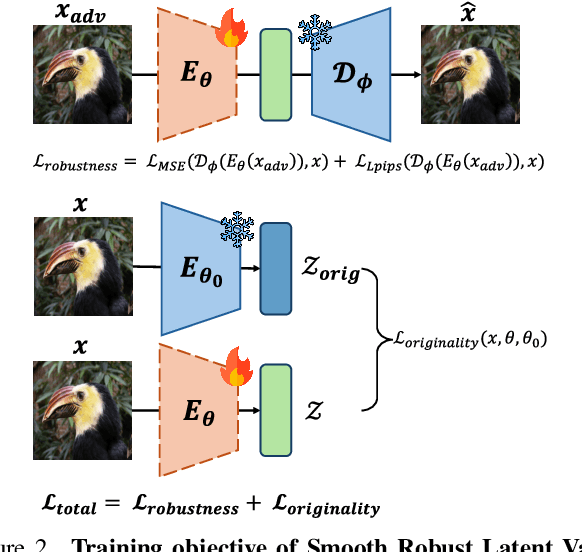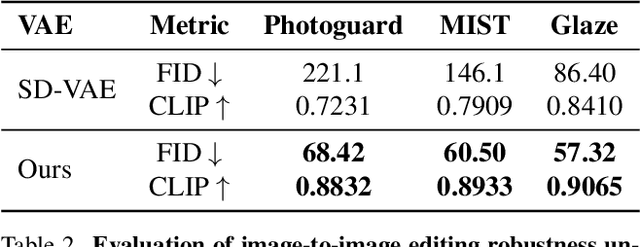Minseon Kim
Learning to Extract Context for Context-Aware LLM Inference
Dec 12, 2025Abstract:User prompts to large language models (LLMs) are often ambiguous or under-specified, and subtle contextual cues shaped by user intentions, prior knowledge, and risk factors strongly influence what constitutes an appropriate response. Misinterpreting intent or risks may lead to unsafe outputs, while overly cautious interpretations can cause unnecessary refusal of benign requests. In this paper, we question the conventional framework in which LLMs generate immediate responses to requests without considering broader contextual factors. User requests are situated within broader contexts such as intentions, knowledge, and prior experience, which strongly influence what constitutes an appropriate answer. We propose a framework that extracts and leverages such contextual information from the user prompt itself. Specifically, a reinforcement learning based context generator, designed in an autoencoder-like fashion, is trained to infer contextual signals grounded in the prompt and use them to guide response generation. This approach is particularly important for safety tasks, where ambiguous requests may bypass safeguards while benign but confusing requests can trigger unnecessary refusals. Experiments show that our method reduces harmful responses by an average of 5.6% on the SafetyInstruct dataset across multiple foundation models and improves the harmonic mean of attack success rate and compliance on benign prompts by 6.2% on XSTest and WildJailbreak. These results demonstrate the effectiveness of context extraction for safer and more reliable LLM inferences.
Gistify! Codebase-Level Understanding via Runtime Execution
Oct 30, 2025Abstract:As coding agents are increasingly deployed in large codebases, the need to automatically design challenging, codebase-level evaluation is central. We propose Gistify, a task where a coding LLM must create a single, minimal, self-contained file that can reproduce a specific functionality of a codebase. The coding LLM is given full access to a codebase along with a specific entrypoint (e.g., a python command), and the generated file must replicate the output of the same command ran under the full codebase, while containing only the essential components necessary to execute the provided command. Success on Gistify requires both structural understanding of the codebase, accurate modeling of its execution flow as well as the ability to produce potentially large code patches. Our findings show that current state-of-the-art models struggle to reliably solve Gistify tasks, especially ones with long executions traces.
Rethinking Safety in LLM Fine-tuning: An Optimization Perspective
Aug 17, 2025Abstract:Fine-tuning language models is commonly believed to inevitably harm their safety, i.e., refusing to respond to harmful user requests, even when using harmless datasets, thus requiring additional safety measures. We challenge this belief through systematic testing, showing that poor optimization choices, rather than inherent trade-offs, often cause safety problems, measured as harmful responses to adversarial prompts. By properly selecting key training hyper-parameters, e.g., learning rate, batch size, and gradient steps, we reduce unsafe model responses from 16\% to approximately 5\%, as measured by keyword matching, while maintaining utility performance. Based on this observation, we propose a simple exponential moving average (EMA) momentum technique in parameter space that preserves safety performance by creating a stable optimization path and retains the original pre-trained model's safety properties. Our experiments on the Llama families across multiple datasets (Dolly, Alpaca, ORCA) demonstrate that safety problems during fine-tuning can largely be avoided without specialized interventions, outperforming existing approaches that require additional safety data while offering practical guidelines for maintaining both model performance and safety during adaptation.
Medical Red Teaming Protocol of Language Models: On the Importance of User Perspectives in Healthcare Settings
Jul 09, 2025Abstract:As the performance of large language models (LLMs) continues to advance, their adoption is expanding across a wide range of domains, including the medical field. The integration of LLMs into medical applications raises critical safety concerns, particularly due to their use by users with diverse roles, e.g. patients and clinicians, and the potential for model's outputs to directly affect human health. Despite the domain-specific capabilities of medical LLMs, prior safety evaluations have largely focused only on general safety benchmarks. In this paper, we introduce a safety evaluation protocol tailored to the medical domain in both patient user and clinician user perspectives, alongside general safety assessments and quantitatively analyze the safety of medical LLMs. We bridge a gap in the literature by building the PatientSafetyBench containing 466 samples over 5 critical categories to measure safety from the perspective of the patient. We apply our red-teaming protocols on the MediPhi model collection as a case study. To our knowledge, this is the first work to define safety evaluation criteria for medical LLMs through targeted red-teaming taking three different points of view - patient, clinician, and general user - establishing a foundation for safer deployment in medical domains.
Enhancing Variational Autoencoders with Smooth Robust Latent Encoding
Apr 24, 2025



Abstract:Variational Autoencoders (VAEs) have played a key role in scaling up diffusion-based generative models, as in Stable Diffusion, yet questions regarding their robustness remain largely underexplored. Although adversarial training has been an established technique for enhancing robustness in predictive models, it has been overlooked for generative models due to concerns about potential fidelity degradation by the nature of trade-offs between performance and robustness. In this work, we challenge this presumption, introducing Smooth Robust Latent VAE (SRL-VAE), a novel adversarial training framework that boosts both generation quality and robustness. In contrast to conventional adversarial training, which focuses on robustness only, our approach smooths the latent space via adversarial perturbations, promoting more generalizable representations while regularizing with originality representation to sustain original fidelity. Applied as a post-training step on pre-trained VAEs, SRL-VAE improves image robustness and fidelity with minimal computational overhead. Experiments show that SRL-VAE improves both generation quality, in image reconstruction and text-guided image editing, and robustness, against Nightshade attacks and image editing attacks. These results establish a new paradigm, showing that adversarial training, once thought to be detrimental to generative models, can instead enhance both fidelity and robustness.
debug-gym: A Text-Based Environment for Interactive Debugging
Mar 27, 2025Abstract:Large Language Models (LLMs) are increasingly relied upon for coding tasks, yet in most scenarios it is assumed that all relevant information can be either accessed in context or matches their training data. We posit that LLMs can benefit from the ability to interactively explore a codebase to gather the information relevant to their task. To achieve this, we present a textual environment, namely debug-gym, for developing LLM-based agents in an interactive coding setting. Our environment is lightweight and provides a preset of useful tools, such as a Python debugger (pdb), designed to facilitate an LLM-based agent's interactive debugging. Beyond coding and debugging tasks, this approach can be generalized to other tasks that would benefit from information-seeking behavior by an LLM agent.
Optimizing Query Generation for Enhanced Document Retrieval in RAG
Jul 17, 2024



Abstract:Large Language Models (LLMs) excel in various language tasks but they often generate incorrect information, a phenomenon known as "hallucinations". Retrieval-Augmented Generation (RAG) aims to mitigate this by using document retrieval for accurate responses. However, RAG still faces hallucinations due to vague queries. This study aims to improve RAG by optimizing query generation with a query-document alignment score, refining queries using LLMs for better precision and efficiency of document retrieval. Experiments have shown that our approach improves document retrieval, resulting in an average accuracy gain of 1.6%.
Automatic Jailbreaking of the Text-to-Image Generative AI Systems
May 28, 2024



Abstract:Recent AI systems have shown extremely powerful performance, even surpassing human performance, on various tasks such as information retrieval, language generation, and image generation based on large language models (LLMs). At the same time, there are diverse safety risks that can cause the generation of malicious contents by circumventing the alignment in LLMs, which are often referred to as jailbreaking. However, most of the previous works only focused on the text-based jailbreaking in LLMs, and the jailbreaking of the text-to-image (T2I) generation system has been relatively overlooked. In this paper, we first evaluate the safety of the commercial T2I generation systems, such as ChatGPT, Copilot, and Gemini, on copyright infringement with naive prompts. From this empirical study, we find that Copilot and Gemini block only 12% and 17% of the attacks with naive prompts, respectively, while ChatGPT blocks 84% of them. Then, we further propose a stronger automated jailbreaking pipeline for T2I generation systems, which produces prompts that bypass their safety guards. Our automated jailbreaking framework leverages an LLM optimizer to generate prompts to maximize degree of violation from the generated images without any weight updates or gradient computation. Surprisingly, our simple yet effective approach successfully jailbreaks the ChatGPT with 11.0% block rate, making it generate copyrighted contents in 76% of the time. Finally, we explore various defense strategies, such as post-generation filtering and machine unlearning techniques, but found that they were inadequate, which suggests the necessity of stronger defense mechanisms.
Protein Representation Learning by Capturing Protein Sequence-Structure-Function Relationship
Apr 29, 2024



Abstract:The goal of protein representation learning is to extract knowledge from protein databases that can be applied to various protein-related downstream tasks. Although protein sequence, structure, and function are the three key modalities for a comprehensive understanding of proteins, existing methods for protein representation learning have utilized only one or two of these modalities due to the difficulty of capturing the asymmetric interrelationships between them. To account for this asymmetry, we introduce our novel asymmetric multi-modal masked autoencoder (AMMA). AMMA adopts (1) a unified multi-modal encoder to integrate all three modalities into a unified representation space and (2) asymmetric decoders to ensure that sequence latent features reflect structural and functional information. The experiments demonstrate that the proposed AMMA is highly effective in learning protein representations that exhibit well-aligned inter-modal relationships, which in turn makes it effective for various downstream protein-related tasks.
Context-dependent Instruction Tuning for Dialogue Response Generation
Nov 13, 2023



Abstract:Recent language models have achieved impressive performance in natural language tasks by incorporating instructions with task input during fine-tuning. Since all samples in the same natural language task can be explained with the same task instructions, many instruction datasets only provide a few instructions for the entire task, without considering the input of each example in the task. However, this approach becomes ineffective in complex multi-turn dialogue generation tasks, where the input varies highly with each turn as the dialogue context changes, so that simple task instructions cannot improve the generation performance. To address this limitation, we introduce a context-based instruction fine-tuning framework for each multi-turn dialogue which generates both responses and instructions based on the previous context as input. During the evaluation, the model generates instructions based on the previous context to self-guide the response. The proposed framework produces comparable or even outstanding results compared to the baselines by aligning instructions to the input during fine-tuning with the instructions in quantitative evaluations on dialogue benchmark datasets with reduced computation budget.
 Add to Chrome
Add to Chrome Add to Firefox
Add to Firefox Add to Edge
Add to Edge